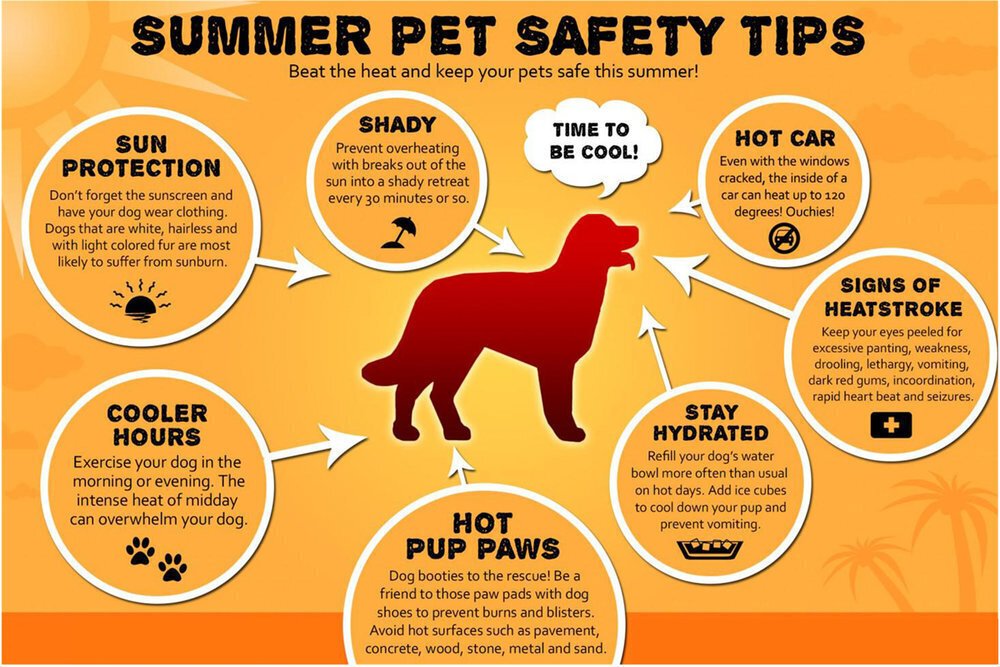
Adopting a Shelter Pet: The Joys and Responsibilities
Adopting a Shelter Pet: The Joys and Responsibilities

Adopting a Shelter Pet: The Joys and Responsibilities? One of the most satisfying choices a person or a family can make is choosing a sheltered pet. Apart from providing a loving home for an animal in need, it improves the quality of life for the adopters in innumerable different ways. Pets of various ages, sizes, and breeds abound in shelters; many have suffered abandonment or neglect. Adopting helps people not only save a life but also acquire a devoted friend who will be eternally appreciative of a second chance.
The unwavering affection and company a shelter pet provides is one of its biggest pleasures. Pets have a special capacity to perceive human emotions; they bring consolation and delight at trying circumstances. After bringing a furry buddy into their life, many adopted pet owners say their general happiness and mental health have improved. Strong bonds between a pet and its owner create a sense of connection and belonging that enhances everyday living.
Although having a pet brings great pleasure, it’s crucial to understand the obligations involved with choosing a shelter animal. Taking care of a pet calls for time, effort, and money over the long run. Prospective pet owners should give their lifestyle, living circumstances, and capacity to meet a pet’s requirements great thought before adopting. Unique challenges abound for shelter pets, including behavioural problems or health concerns that can call for extra veterinarian treatment or training and patience.
Once adopted, a shelter pet needs time to develop trust and create secure surroundings. Many animals housed in shelters have suffered trauma, which causes anxiety or dread in novel circumstances. Adopters should be ready to invest time in getting their new pet used to their house so they may feel comfortable and secure. Regular training and socializing help to solve behavioural problems, therefore smoothing out the change for the owner as well as the pet. Given some pets may require more time to acclimate than others, patience and understanding are especially important during this change phase.
Apart from the emotional gains, keeping a shelter pet can also help one financially. Many shelters have low adoption rates that often include a health check, spaying or neutering, and immunizations. Comparing this to buying a pet from a breeder or pet store, this can save new pet owners major expenses. Moreover, having a pet promotes responsible pet ownership and compassion since it emphasizes the need for spaying and neutering to assist in the reduction of overcrowding in animal shelters.
Choosing to adopt a shelter pet also teaches friends and relatives the value of rescue above acquisition. Personal experiences with adopting a shelter animal can motivate others to adopt rather than purchase some thought. Every adoption narrative has the power to change things by supporting a more compassionate attitude to pet ownership and so helping to lower the count of homeless animals in shelters.
Ultimately, choosing a shelter pet demands a dedication to appropriate care even as it gives great delight and company. Adopters of shelter animals not only change the life of a worthy pet but also improve their own in ways they could never have predicted. Adoption is a worthy path since the pleasures and obligations of pet ownership can result in a happy relationship spanning years.

Senior Pets: How to Care for Aging Dogs and Cats
Senior Pets: How to Care for Aging Dogs and Cats
How to Care for Aging Dogs and Cats? Our older dogs start a new stage of life requiring more attention and care. Dogs and cats experience a range of physical, psychological, and behavioural changes similar to those of people as they become older. One has to grasp these changes and learn how to adapt their care plan if one wants their elder years to be pleasant and cheerful. Whether your ageing pet is a senior dog that used to be fairly active or a kitten that has just slowed down, here is what to expect and how to provide the best care for it.

Changes to Expect as Your Pet Ages
- Reduced Mobility and Joint Issues
Among the most evident changes older dogs show is limited movement. Common in older dogs, arthritis brings pain, stiffness, and difficulty moving. Your dog may find it difficult to hop on furniture, climb stairs, or go on long walks. Dogs may limp following intense exercise; cats may hesitate to get onto their chosen high perch. Usually, this is the effect of natural aging-related wear and pressure on their joints.
-
Slower Metabolism and Weight Changes
As pets age their metabolism slows down, and regulating weight becomes more challenging. Senior dogs may be more prone to weight increase, which would exacerbate their already damaged joints more. On the other hand, some dogs could lose weight from dental problems or decreased appetite. Both conditions could lead to health issues, hence monitoring the weight of your pet is pretty crucial.
- Sensory Decline
Particularly regarding sight and hearing, older animals often lose their senses. Dogs may not respond to your calls as quickly, and cats may be more reluctant to investigate unusual areas. Your pet may also startle more easily from poor vision decreased hearing or from bumping against objects. Particularly in new or difficult situations, this sensory loss can cause anxiety and erode confidence.
- Behavioral Changes
Senior dogs can have cognitive decline, sometimes referred to as “doggy dementia” or “feline cognitive impairment. Among the symptoms are higher anxiety, disorientation, confusion, and changed sleeping patterns. Pets with cognitive issues may show less interest in activities they used to enjoy, pace at night, or grow more boisterous.
How to Provide the Best Care for a Senior Pet
Regular Veterinary Checkups
As they age, pets become more susceptible to health issues including renal disease, heart disease, and cancer. Early diagnosis and treatment of many disorders rely on frequent veterinarian visits. Your veterinarian can assist with ideas on how best to keep your pet comfortable and healthy, prescription changes, and diagnostic tests.
Joint Support and Pain Management
Senior dogs can have joint issues, hence it is essential to provide them suitable environment. Invest in orthopaedic pet beds with extra cushioning for painful joints. Your veterinarian can also inquire about supplements meant to support joint integrity, such as glucosamine or chondroitin. Severe conditions could call for the prescription painkillers of a veterinarian to increase the quality of life of your pet.
Diet Adjustments
Senior dogs need food fit for their circumstances. Look for senior-specific pet food formulations with fewer calories, more fibre, and extra nutrients to promote cognitive ability and joint health. If your pet has dental problems making eating challenging, you should also provide softer food. See your veterinarian always before drastically altering your pet’s food.
Mental Stimulation and Exercise
Even if their activity level has dropped from past years, senior pets still need mental stimulation and occasional exercise to remain healthy. Older canines benefit from short, slow-paced walks; interactive toys help keep both dogs and cats mentally active. Great strategies to preserve their cognitive capacity include puzzle feeders, light fun, and free of tension in their joint activities.
Comfort and Safety at Home
Reducing hazards and planning pleasant spaces will help your house be senior-pet-friendly. Eliminate anything your pet might trip on, then consider creating ramps to provide access to furniture without jumping. Pet vision loss sufferers should avoid often rearranging furniture since it may confuse them. More blankets or heating pads will help to add extra warmth and comfort, particularly for dogs with arthritis..
Conclusion
Caring for a senior pet requires patience, understanding, and a few adjustments to their routine. By staying vigilant to the changes in their behaviour and health, you can ensure your ageing dog or cat remains happy and comfortable during their golden years. With the right care, your senior pet can continue to enjoy life, bringing you companionship and love for years to come.
Previous Post >>>
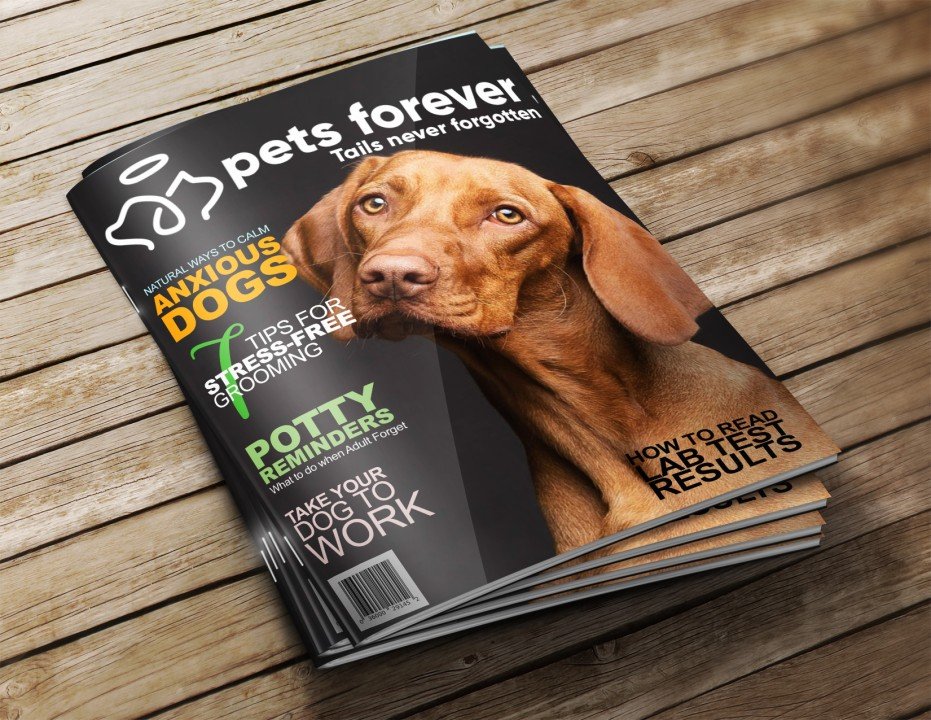
What do I need to know before I get a new pet?
What do I need to know before I get a new pet?
What do I need to know before I get a new pet? Bringing a pet into your house is a big choice that calls for both serious consideration and preparation. Though they provide many advantages to our lives, pets also have obligations that cannot be disregarded. They bring happiness and company. Potential pet owners should be aware of some crucial elements to make sure they are ready for the commitment before choosing or purchasing a pet.

1. Time and Commitment
Pets call for long-term dedication; they are not transient accessories. Your pet type will determine whether you are registering for years of care. For example, dogs might live 10 to 15 years, whereas cats can live far longer. Pets need time for grooming, play, training, and medical attention beyond only food and walking. Consider whether your present way of life offers the time required to look after a pet. Busy schedules, frequent travel, or long work hours can make it difficult to satisfy the needs of a pet, particularly one that demands continual attention like a dog.
2. Financial Responsibility
Beyond the original adoption or purchase price, pets have continuing expenses. Food, immunisations, frequent veterinarian visits, grooming, toys, and occasionally pet insurance count among the expenses. Unexpected medical issues might cause expensive veterinarian expenditures. Larger dogs or those with particular needs—such as exotic animals or older dogs—may call for even more major financial commitment. Budget for these costs before deciding on a pet.
3. Space Considerations
What do I need to know before I get a new pet? The kind of pet you should think about depends much on the dimensions of your house. Large dog breeds or active pets, for instance, require lots of space to roam about and exercise—which might not be appropriate for apartment life. Smaller creatures like fish or hamsters, on the other hand, call for less room. All animals, though, require surroundings where they can be comfortable and safe. Pet-proofing your house is also essential to make sure it is clear of risks including poisonous plants, electrical cables, or small things that might be swallowed.
4. Choosing the Right Pet for Your Lifestyle
Every house cannot accommodate every pet. Potential owners should take the needs, temperament, and energy levels of the animal into account. For instance, certain dog breeds are happy with less activity while others are more active and call for consistent exercise. Comparably, various animals including cats, birds, reptiles, and other pets have unique personalities and demands. Investigating several breeds and species will help you choose a pet fit for your living environment, degree of activity, and way of life.
What do I need to know before I get a new pet?
5. Training and Socialization
Pets, especially dogs, need training. Pets can acquire behavioural problems including extreme barking, biting, or destructive tendencies without appropriate training. Early on training investments of time are essential to guarantee your pet adjusts to your house and behaves properly. Furthermore crucial for preventing anxiety and hostility is socialising. To grow well-rounded, pets must be exposed to several surroundings, people, and other animals. Classes in puppy training or advice from animal behaviourists can help to guarantee a seamless transition.
6. Long-Term Health Care
Maintaining pet health depends critically on regular veterinary treatment. Dogs need dental work, regular visits, and vaccines. Some animals also have particular health problems that call for continuous treatment. For instance, some dog breeds are more prone to hip dysplasia while others might experience respiratory problems. Pet owners should be ready to handle any health issues that develop and educate themselves about the breed-specific hazards of their pets.
7. Adoption vs. Buying from a Breeder
There are significant ethical and pragmatic issues to weigh when choosing between buying from a breeder versus adopting from a shelter. Adoption helps lower the population of animals in shelters and offers a second opportunity to those in need of a home. Though it can be more costly, purchasing from a reputable breeder lets owners know the pet’s genealogy and health history. Should one decide to purchase, it is imperative to investigate the breeder and make sure they adhere to moral standards, therefore avoiding “puppy mills” or breeders who give profit above animal welfare.
8. Allergies and Compatibility
One should take household members’ possible allergies into account when choosing or purchasing a pet. Common and uncomfortable, pet allergies can force a painful choice regarding rehoming a pet. Furthermore, make sure everyone living in the house is ready to help with pet care and comfortable with owning one. Bringing a new pet into a house with kids or other animals should be done carefully to guarantee seamless integration and stop arguments.
What do I need to know before I get a new pet?
9. Legal and Ethical Responsibilities
Having pets carries moral and legal responsibilities. Certain breeds may be limited in some areas, and some specific pets need licensing or permits. Make sure you are conversant with local pet ownership rules. Besides, spaying or neutering your pet is a crucial duty to stop overpopulation and lower the chance of health problems. Ethical pet ownership also includes creating a loving atmosphere where your pet may flourish under your care, including consideration of its emotional and physical state.
10. The Emotional Impact
What Should Potential Pet Owners Know Before Adopting or Buying a Pet? be a trip of emotions that brings great happiness but sometimes difficulties. Often integrating into the family, pets provide affection and company. They may, however, also have disease or behavioural issues which call for patience and care. Pets also may require more medical treatment as they age, which may be emotionally and financially taxing. Potential pet owners should be ready to manage the ups and downs that accompany pet ownership, including the ultimate loss of a pet, which can be a challenging emotional event.

Conclusion
What do I need to know before I get a new pet? Adopting or purchasing a pet is a fulfilling experience, but it also comes with responsibilities that call time, effort, and forethought. Potential pet owners may guarantee they are ready to offer a loving and caring home for their new friend by weighing elements including time commitment, financial expenses, space, and health care needs. Pets and their owners can have a lifetime, happy relationship if one gives careful thought and prepares properly.

How Do Different Animals Interact?
How Do Different Animals Interact?
How Do Different Animals Interact? Like it is for people, survival and interaction for animals depend on communication in great part. Although language is our main tool, animals have evolved other ways to interact with one another. From vocalizations to body language, chemical cues, and even physical contact, these techniques span Knowing animal communication helps one to better understand their behaviour, social systems, and survival strategies.

1. Vocal sounds
Among the most obvious kinds of animal connection is vocal communication. Sounds are used by many animals to send signals including territory claims, mating calls, or warnings. For extended distances, wolves, for instance, signal position and cohesiveness among pack members by using howls. Birds also have complex systems of calls and songs, each with a particular purpose. While a piercing chirp could alert others of a close danger, a bird may sing to draw a partner.
Other Species with sophisticated vocalizations are dolphins. Their pulsing noises, whistles, and clicks help them to find prey, negotiate their surroundings, and engage in social interaction. Every dolphin uses its distinctive whistle—almost like a name—to recognize itself to others.
2. Nonverbal language
Animal communication involves body language in a major part. Many Species show dominance, subordination, or willingness to mate using bodily gestures, postures, and movements. To interact with people and other dogs, for example, dogs mostly rely on body cues. A wagging tail usually denotes enthusiasm or delight; drooping ears and a hunched torso might imply fear or subserviency.
Primates with advanced use of body language include gorillas and chimps. Common among monkeys, grooming serves not only with hygiene but also with social connection. It builds group cohesiveness and trust. Furthermore expressing emotions, status, and intentions are movements such as arm-raising, chest-thumping (in gorillas), and facial expressions.
3. Chemical Reactions (pheromones)
Many Animals convey vital information using chemical signals called pheromones. These chemical signals might identify territory, show a willingness to mate or communicate a warning. Pheromones are well-known for their use by insects including ants and bees. To help others find a food supply, ants, for instance, create chemical trails. To Alert others of danger, bees produce alarm hormones that cause defensive action in the hive.
Mammals use pheromones as well. To mark their territory, cats, for instance, have scent glands on their faces and bodies. A cat’s fragrance is deposited when it rubs against furniture or even its owner, therefore indicating that the space or person is inside its territory.
4. Tactile Transmission of Information
Another vital means of communication is physical contact, particularly in tight social groups with animals. Common ways animals create relationships and set hierarchies are grooming, nuzzling, and play-fighting. Elephants use their trunks, for example, for greeting, consoling, and guiding one another in addition to eating and drinking. While adult elephants commonly touch trunks as a welcome, a mother elephant could gently lead her child with her trunk.
How Do Different Animals Interact? Dolphins also have tactile communication. Often engaging in physical contact, rubbing against one another, or synchronous swimming, they help create social ties among pods.
5. Visual Correspondence
From minute variations in body colour to complex displays used to draw in mates or fend off predators, visual communication may range. Many reptiles, birds, and fish interact using visual signals. A typical example is peacocks, which attract females with their theatrical tail feather display. The mating choice process depends much on the size, colour, and movement of the feathers.
Conversely, chameleons express emotions and intentions through means of colour shifts. While darker tones might imply tension or subserviency, bright colours can signal hostility or a ready-made match. Some fish Species in maritime habitats employ bioluminescence, which produces light to either find mates or fool predators.
6. Combining Techniques
Many animals mix many kinds of communication to transmit complicated messages. To indicate the whereabouts of food supplies, bees, for instance, engage in a “waggle dance”. This dance uses vibrations and pheromones to accentuate the message in addition to certain motions—visual and tactile cues.
To communicate with people or among their pack, dogs including wolves and domestic dogs also frequently combine vocalizations, body language, and scent marking.
Conclusion
How Do Different Animals Interact? An interesting and varied area, animal communication reveals the intellect and adaptability of many animals. From bird vocal melodies to ant chemical trails to peacock visual displays, animals have developed specific communication techniques fit for their habitats and social systems. Understanding these behaviors helps us to better understand not just animal interactions but also their survival in challenging environments.
Previous Post >>>

Why Should We Keep a Pet? The Importance of Pets in Our Lives
Why Should We Keep a Pet?
The answer is simple “Companionship and well-being”
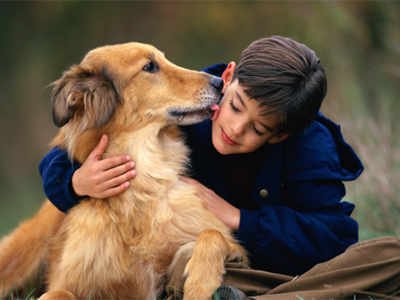
Why Should We Keep a Pet? Since ancient times, people have treasured pets as loving, devoted, and friends. Having a pet has many advantages for mental, physical, and emotional health in addition to the joy they bring. Having a pet is much more than just having an animal in the house; there are numerous ways in which it can greatly enhance your quality of life.
1. Mental Health Benefits
The Importance of Pets in Our Lives
The beneficial impact that keeping a pet has on mental health is among its biggest benefits. It has been demonstrated that having pets—especially dogs and cats—reduces stress, anxiety, and depression. Serotonin and dopamine, the hormones in charge of calm and happiness, can be released just by touching a dog or cat. Pets provide companionship to those who are lonely or living alone, which helps lessen feelings of isolation.
In daily life, pets also help to establish regularity and order. Taking care of a dog or cat at set times fosters accountability and allows individuals to stick to a schedule, which is beneficial for those battling mental health conditions like depression.
2. Physical Health Benefits
Having a dog in particular encourages an active lifestyle. Dogs require frequent exercise, motivating their owners to maintain an active lifestyle. Walking every day, playing fetch, and running with your dog are all beneficial for improved blood pressure control, cardiovascular health, and general fitness. Pets are the ideal source of inspiration for exercise, which is crucial for keeping the body in good condition.
Furthermore, studies have shown that having a pet lowers cholesterol and lowers the risk of heart disease. This is primarily because pets reduce stress and encourage an active lifestyle.
3. Social Benefits
Pets frequently serve as social bridges. Walking their dogs or going to the dog park increases the likelihood of social interaction for dog owners in particular. These exchanges can improve social life, foster new friendships, and lessen feelings of isolation. Pets assist kids learn empathy and responsibility, which helps them grow into strong social beings.
Why Should We Keep a Pet? Pets also give people something to talk about in common. Pets can assist build social contact and community relationships by fostering topics like pet care and fostering bonds over a shared love of animals.
4. Encouraging Accountability
Taking care of a pet requires a lot of responsibilities. Pet care involves time and dedication, from regular exercise to feeding and grooming. People, especially kids, benefit from this duty in terms of developing accountability and organizing abilities. Taking care of another living thing gives people a sense of responsibility and encourages them to organize their lives.

Conclusion
Why Should We Keep a Pet? In conclusion, there are several psychological, physical, and emotional advantages of owning a pet. Pets encourage a better, more active lifestyle while offering affection, company, and emotional support. Being sociable and teaching responsibility, they are priceless companions who enhance their owners’ quality of life.
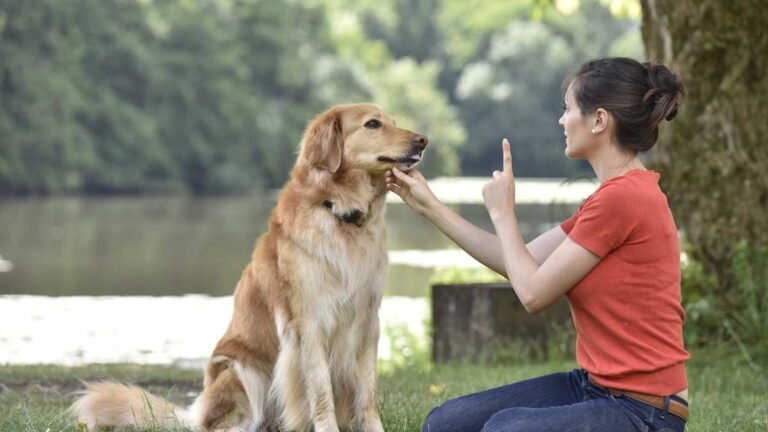
Top 8 Dogs Training Tips: Effective Techniques for Obedience and Good Behavior
Top 8 Dogs Training Tips: Effective Techniques for Obedience and Good Behavior
Top 8 Dogs Training Tips: Among the most fulfilling experiences a pet owner can have is training their animal. Whether your pet is a rowdy rabbit, an inquisitive cat, or a lively puppy, a harmonic connection depends on your teaching your pet obedience and good behaviour. Good training guarantees that your pet knows your expectations, therefore simplifying your life together. This page describes efficient methods to help you teach your pet excellent behaviour and obedience.
1. Start with Basic Commands
Any effective training program’s basis is an instruction in fundamental commands such as “sit,” “stay,” “come,” and “down.” Not only are dogs suited for these orders; but other animals, including cats, may also choose them by constancy and patience. Starting one command at a time, thank your pet for following the command correctly with goodies, compliments, or playtime. Short training sessions—between 10 and 15 minutes—help you to keep your pet’s attention and prevent frustration.
2. Consistency is Key
Training your dog requires consistency. For every directive, use the same words, tone, and hand gestures to prevent confusing your pet. Everybody living in the house should agree and apply the same orders and approaches. Your pet will learn what is expected of them by this constancy, therefore supporting good behaviour and obedience.
3. Positive Reinforcement
Among the most powerful tools for instruction is positive reinforcement. Under this method, your pet will be rewarded for positive behaviour and urged to carry on the intended behaviours. Rewards could be snacks, words of thanks, stroking, or playing. The secret is to give your pet rewards right away following the desired behaviour so they come to link the reward with the activity. This approach enables your pet’s behaviour to be shaped over time, increasing their likelihood of responding to directions and acting politely.
4. Avoid Punishment
While positive reinforcement is effective, punishing your pet may impede its development. In dogs, punishment—physical corrections or yelling—may generate anxiety, fear, and even aggression. Instead of punishing undesired conduct, try diverting your pet’s attention towards a positive action. If your dog chews on furniture, for example, guide them to a chew toy and commend them for using it.
5. Socialization
Especially for dogs, training depends considerably on socialising. Your pet will become less anxious and more confident if you expose it to diverse environments, people, and other animals. Early socialisation can assist in preventing hostility and anxiety as well as behavioural disorders. Start by gradually exposing your pet to new environments where every encounter makes sense and fulfils her.
6. Use of Clicker Training
Popular and effective “clicker training” uses a small, portable gadget that clicks when pressed. After marking the precise time your pet exhibits the intended behaviour, a reward follows. This approach enables exact communication with your pet, therefore guiding their understanding of which activities are rewarded. Teaching difficult behaviours and skills calls especially for click-through instruction.
7. Patience and Persistence
Training your pet calls for tenacity and endurance. Sometimes progress is gradual; setbacks are natural. Throughout training, keep a cool head and have a good attitude. Take a break and try once again later if your pet looks bored or annoyed. Remember that every pet picks things at their speed; hence, be patient and acknowledge little accomplishments as you go.
8. Seek Professional Help if Needed
Seeking expert advice can be helpful whether your pet exhibits particular behavioural problems or if you find yourself struggling with training. Expert trainers may offer specific advice and methods catered to your pet’s needs. They may also assist with more difficult behaviours, therefore making sure your pet grows to be a disciplined and compliant friend.
Conclusion
Top 8 Dogs Training Tips: Teaching your pet is a continuous process that needs time, effort, and consistency. Positive reinforcement, patience, and consistency will help you teach your pet obedience and good behaviour, therefore improving the bond. Training may be a fun experience for your pet and you both depend on the correct methods, thereby enhancing the link you two have.
Thanks for Reading
Dogs Training Tips
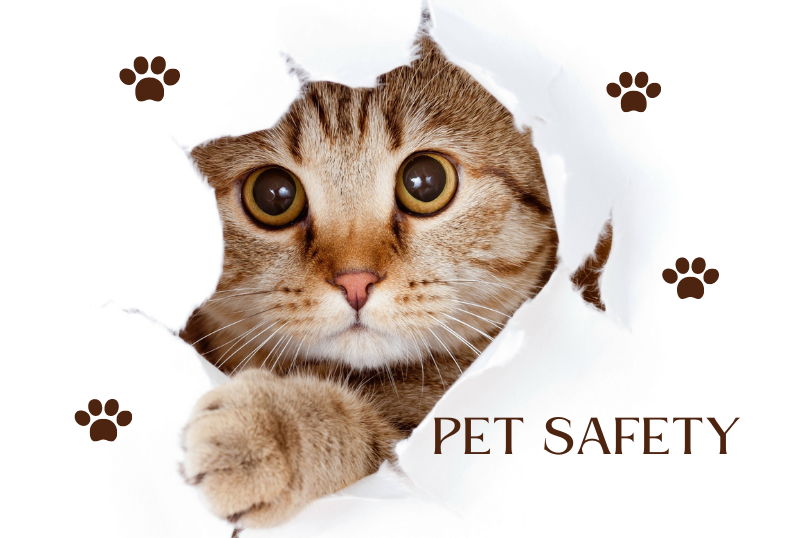
Pet Safety in Extreme Weather: 3 Essential Tips for Protecting Your Furry Friends
Pet Safety in Extreme Weather: Essential Tips for Protecting Your Furry Friends
Pet Safety in Extreme Weather: Given the erratic nature of climate systems, extra care is needed by owners to guarantee their fluffy friends’ safety and comfort during extreme weather conditions. Animals can’t protect themselves from scorching sun, cold or fierce storms hence people are supposed to assume this role. This write-up gives useful tips on what you should do to your animals so that they don’t get hurt when the weather is too harsh for them.
1. Hot Weather Precautions
Pets, particularly dogs and cats, are at risk in hot weather. This can lead to dehydration and overheating which may cause sunstroke. To protect your pet:
⦁ Provide Ample Water: Make sure your pet always has fresh water available. In case of hot temperatures, it’s advisable to check their water bowl every so often.
⦁ Avoid Midday Walks: 10 am and 4 pm are the hottest hours of the day; hence, it is a dangerous time for outdoor activities. Take your dog out early in the morning or late in the evening when it is cool enough.
⦁ Never Leave Pets in a Parked Car: Even with a window open slightly, this will still make oven-like conditions inside a car. Temperatures within a vehicle can reach lethal levels within minutes resulting in deadly hyperthermia.
⦁ Create a Cool Environment: During hot seasons pets should stay indoors where the temperature is lower; otherwise they must find shade and be kept cool with good ventilation around them.
2. Cold Weather Considerations
Cold weather poses its own set of challenges especially for pets with thin coats or small bodies. To ensure your pet remains healthy during winter months:
⦁ Limit Outdoor Time: Just as hot weather can be harmful, cold weather can also be dangerous. Frostbite and hypothermia are real threats, so limit your pet’s time outside, especially during freezing temperatures.
⦁ Provide Warm Shelter: If your pet spends time outdoors, ensure they have a warm, dry, and insulated shelter to protect them from the cold. Blankets and bedding can help retain body heat.
⦁ Dress Appropriately: Consider using a pet sweater or coat for dogs with short hair or those that are sensitive to the cold. Booties can protect their paws from ice, salt, and frostbite.
⦁ Check for Frostbite: After your pet has been outside, check their ears, paws, and tail for signs of frostbite, such as pale or bluish skin. Seek veterinary care if you suspect frostbite or hypothermia.

3. Storm and Natural Disaster Preparedness
Pet Safety in Extreme Weather: Pets can suffer greatly when the weather is unstable, as during thunderstorms, hurricanes, or tornadoes. These pointers should help you become ready:
⦁ Assemble an Emergency Kit: Make a pet emergency pack with food, water, medications in case of any issue, leash and identifying tags. Store it somewhere you might quickly access and that is safe.
⦁ Secure Shelter: When storms strike, keep your pet indoors and limited to one area. pleasant environment. Should you be forced to evacuate, do so with your pets; never abandon them. Pets are increasingly allowed to stay in many hotels and shelters during natural disasters.
⦁ Calm Their Nerves: Loud noises and flashing lights can cause pet fear. Using pheromone spray or anxiety wrap could help you relax them during storms.
Conclusion
Although inclement weather can cause problems for pets, you can keep your furry friends safe and cosy by following the correct advice. Always keep conscious of the temperature and act preventatively to protect your pet from the surroundings. By following basic preventive steps, you may ensure your dogs’ safety and well-being independent of the temperature. Still, they rely on you.
Thanks for Reading
Pet Safety in Extreme Weather
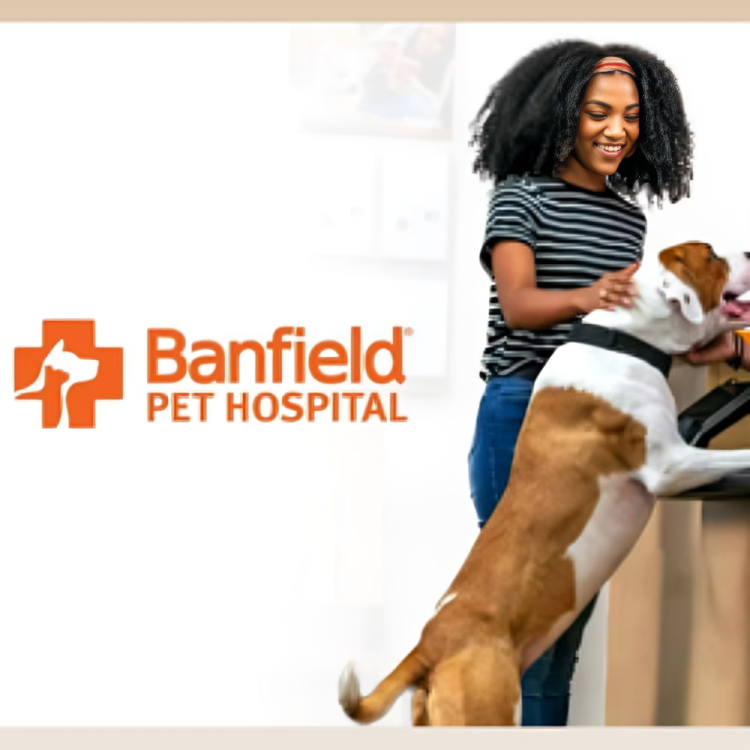
Banfield Pet Hospital: A Comprehensive Look at Quality Pet Care
Banfield Pet Hospital: A Comprehensive Look at Quality Pet Care
Banfield Pet Hospital: Regarding pet care, Banfield Pet Hospital is among the most identifiable and reputable names in the business. Since its founding in 1955, Banfield—which boasts more than 1,000 sites around the country—has been offering pets superior veterinarian treatment. Examining the background, offerings, and influence of Banfield Pet Hospital, this page explores why pet owners looking for all-encompassing treatment for their furry family members choose this hospital.
A Brief History of Banfield Pet Hospital
Veterinarian Warren J. Wegert opened Banfield Pet Hospital in Portland, Oregon. His goal was to provide pets with easily available and reasonably priced veterinarian treatment so that every animal, from all walks of life, could get the necessary medical attention regardless of owner income. From a single clinic, Banfield expanded over time into a national network of hospitals and joined the Mars, Incorporated family in 2007. Thanks to this cooperation, Banfield may increase the scope of its offerings and reach even more pet owners.

Comprehensive Veterinary Services
Banfield Pet Hospital provides a wide spectrum of treatments meant to satisfy different demands of animals. From simple check-ups and vaccines to sophisticated surgical operations, Banfield is ready to manage almost all facets of pet care.
⦁ Preventive Care: Knowing that a pet’s long-term well-being depends mostly on regular check-ups and early identification of possible health problems, Banfield gives preventative treatment great weight. Designed to meet the unique requirements of dogs, their Optimum Wellness Plans® provide reasonably priced bundles covering routine tests, vaccinations, dental work, and parasite management.
⦁ Diagnostics and Treatment: Modern diagnostic tools let Banfield veterinarians rapidly and precisely identify various health problems. From X-rays and blood tests to ultrasounds and endoscopies, Banfield guarantees dogs get the best treatment. Once a diagnosis is rendered, the hospital offers a range of treatment choices including medication, surgery, and specialist care for chronic illnesses.
⦁ Surgical Services: From simple spay and neuter operations to more complicated treatments including orthopedic repairs and mass removals, Banfield’s surgical prowess is broad. The highly qualified surgical staff of the hospital treats every operation with great care to guarantee the comfort and safety of the pet.
⦁ Emergency and Urgent Care: Although Banfield is not a 24/7 emergency hospital, several sites provide urgent care facilities during regular business hours. If pet owners are facing non-life-threatening events, such as minor injuries or sudden illness, they can bring their animals in for quick assistance.
Focus on Pet Owner Education
Empowering pet owners with the knowledge they need to properly tend to their animals is one of Banfield’s main goals. The facility offers a plethora of tools both online and in-person to assist pet owners in knowing the health requirements of their animals. From knowledge of common health issues to nutrition and exercise recommendations, Banfield’s educational initiatives guarantee that pet owners are knowledgeable and ready to make the best choices for their animals.
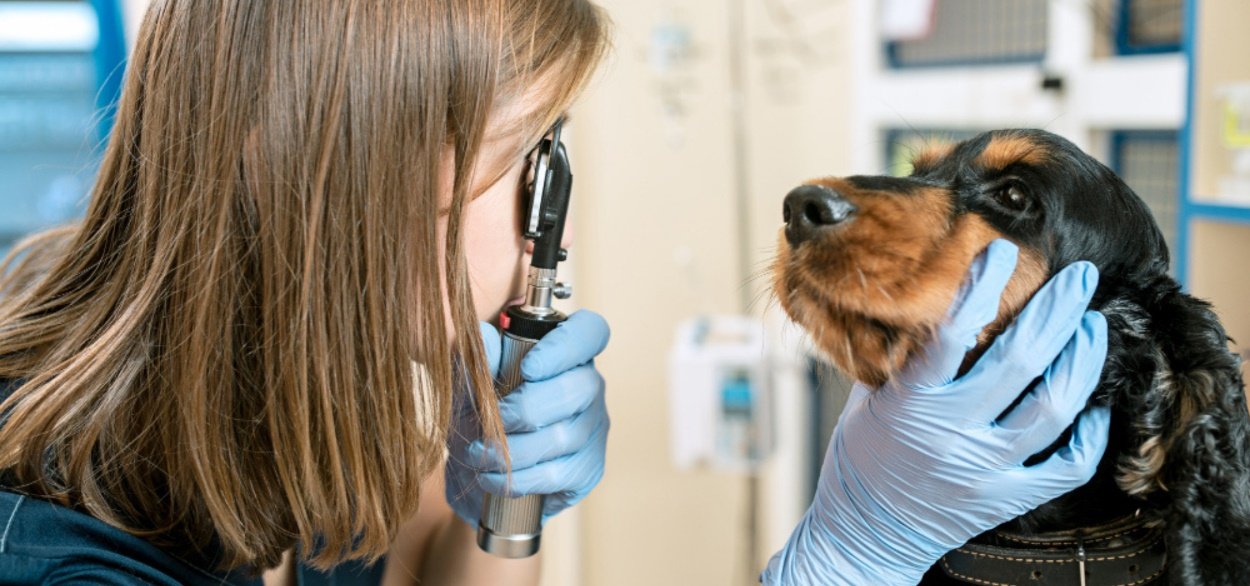
Banfield’s Commitment to Community and Sustainability
Apart from offering first-rate veterinary treatment, Banfield is dedicated to improving the surroundings and the local communities it attends. Established in 2015, the Banfield Foundation uses funding and relationships with nearby shelters and rescue groups to help pets and their owners lead better lives. The charity supports projects aiming at keeping pets and their families together, disaster relief efforts, and veterinary care for pets in underprivileged areas.
Banfield also gives environmental obligations great weight. Reducing waste, saving energy, and employing environmentally friendly materials in its buildings are just a few of the sustainability initiatives the hospital network has instituted. These initiatives show Banfield’s larger will to be a conscientious business citizen.
Challenges and Criticisms
Banfield Pet Hospital has not been without difficulties and complaints even if it has a good name for its treatments. Although the Optimum Wellness Plans® offer discounts on preventative procedures, some pet owners have voiced worries about the expense of care as the cost of unanticipated treatments and operations can still be significant. Banfield, being a sizable corporate business, has also come under fire from people who value the individualized touch of independent veterinary offices.
Banfield has responded to these issues, though, by providing flexible payment choices and keeping staff members’ training and development investments ongoing. Additionally fostering confidence and loyalty among its patients is the hospital’s dedication to openness and honest communication with pet owners.
Looking Ahead: The Future of Banfield Pet Hospital
Banfield Pet Hospital is poised to maintain its leading position, in the pet healthcare industry as it evolves. By prioritizing care investing in technologies and embracing sustainable practices the hospital is well equipped to cater to the needs of pets and their owners for the foreseeable future. Through its commitment to community engagement and education, Banfield solidifies its reputation as a trusted companion in pet wellness.
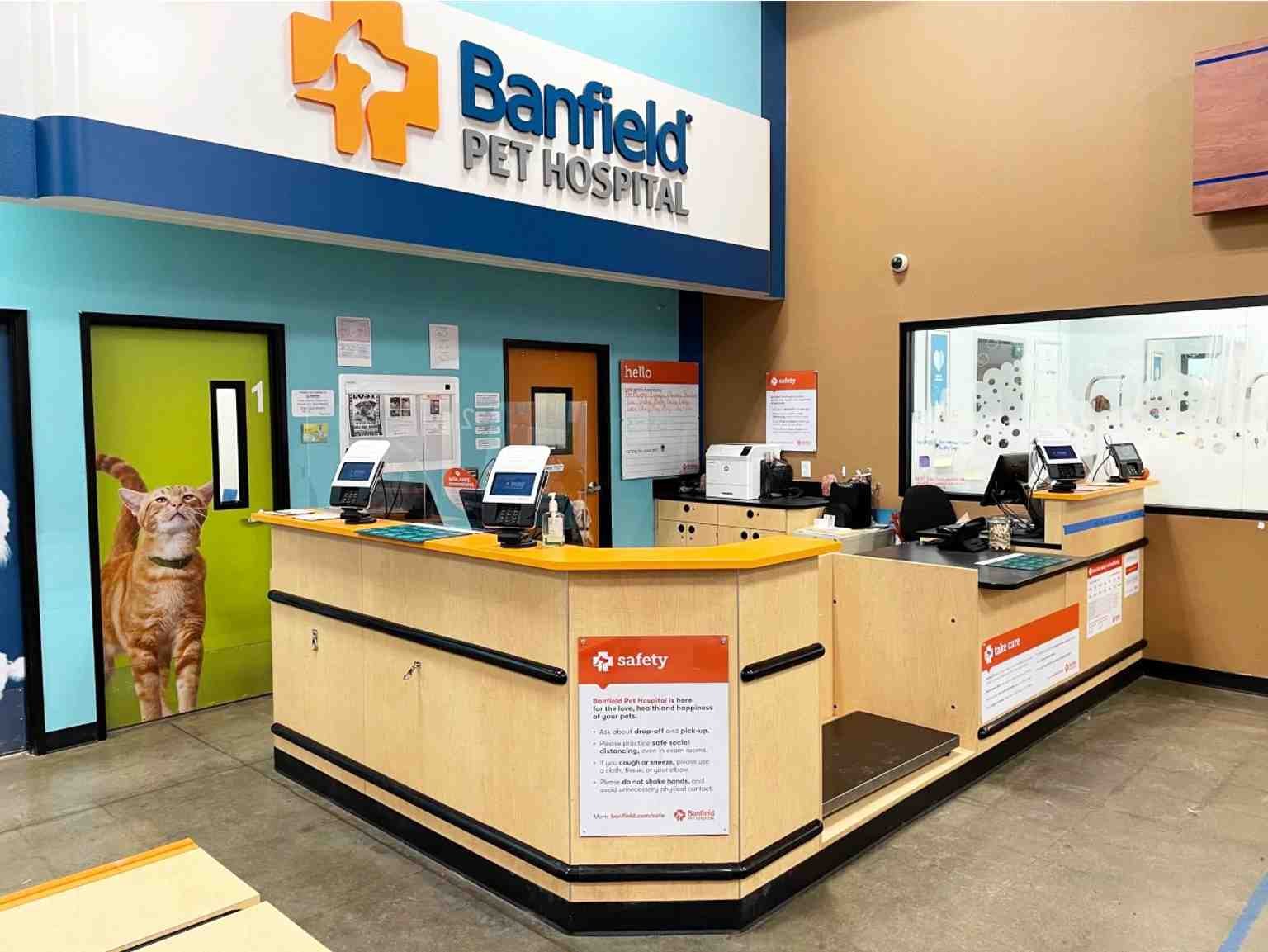
With a range of services and a strong focus on care, Banfield Pet Hospital continues to make significant contributions to veterinary medicine. While facing challenges along the way Banfield’s dedication to improving the well-being of dogs and their owners remains steadfast. As it expands and adapts to the changing landscape of pet healthcare the hospital is set to remain a cornerstone of practice, in the United States.
Thanks for Reading………

Richter Animal Hospital & Pet Resort: A Haven for Your Furry Friends
Richter Animal Hospital & Pet Resort: A Haven for Your Furry Friends
Richter Animal Hospital & Pet Resort: Selecting a qualified veterinarian clinic is rather important for the welfare of our dear animals. Pets are cherished pets who provide our lives with enjoyment, comfort, and company; they are more than just plain animals. Richter Animal Hospital & Pet Resort’s first choice among surrounding pet owners is based on its opulent boarding facilities and high-rate medical treatments. Thanks to its modern facilities, staff of committed experts, and tremendous dedication to animal welfare, Richter Animal Hospital & Pet Resort has grown to be a vital part of the community offering first-rate pet care and guaranteeing animal welfare.
A History of Excellence
The major objectives of Richter Animal Hospital & Pet Resort are to provide animals in the absence of their owners with better medical treatment and safe and comfortable surrounds. From a modest clinic over years, the hospital has expanded into a full-service facility meeting many requirements of animals and their owners. Dr Karen Richter and associates envisioned a facility whereby all-in-one local dogs would get first-rate medical treatment and a lovely boarding experience.
Great awareness of the link between animals and their owners, ingenuity, and strong compassion help the hospital to grow in great renown. Richter Animal Hospital & Pet Resort has been able to inspire a great amount of local families’ confidence and loyalties using this method.
Comprehensive Veterinary Care
Richter Animal Hospital & Pet Resort first gives considerable focus on their veterinary offerings. Driven by animal welfare, the facility makes use of seasoned vets, veterinary techs, and support staff. From basic wellness checks and immunizations to more involved surgical operations and emergency care, they provide a broad spectrum of medical services.
⦁ Preventive Care:
The hospital treats veterinary problems essentially in a preventive sense. Vaccines, regular visits, and dental work assist to keep pets healthy and ward against disease. Early identification and intervention are stressed by the Richter Animal Hospital vets as absolutely essential for greatly raising pet quality of life.
⦁ Diagnostic Services:
Among current diagnostic technologies, the hospital features in-house lab services, digital radiography, and ultrasonic waves. These innovative technologies provide accurate and quick detection of a wide range of ailments, therefore ensuring that dogs receive the correct therapy as soon as required.
⦁ Surgical Services:
Richter Animal Hospital & Pet Resort provides a wide spectrum of surgical treatments ranging from basic spays and neuters to more difficult operations. The hospital’s surgical team is rather qualified; the modern operation suites there follow the best criteria of sterility and safety. Priorities, therefore, include post-operative care and pain management to make sure every patient recovers without incident.
⦁ Emergency Care:
Pet owners should understand that catastrophes strike at any moment and that their animals are under professional care. The hospital offers emergency treatment accessible throughout business hours; its staff is equipped to manage a broad spectrum of significant medical situations.
A Luxurious Pet Resort
Richter Animal Hospital & Pet Resort provides opulent pet boarding in addition to veterinarian treatment. Designed to be a home away from home, the pet resort offers a safe, comfortable space for animals while their owners are away. The institution serves dogs and cats, with specific facilities catered to fit their particular needs.
⦁ Canine Accommodations:
Richter Pet Resort has first-rate canine boarding amenities. Dogs live in spacious, climate-regulated homes with loads of mobility room. Every suite features cozy furniture, and the resort features many kinds of stay, including luxury suites with additional conveniences like web cameras letting owners check their dogs from far away.
⦁ Feline Accommodations:
Richter Pet Resort generates equally strong cat interest. Designed with thought for the specific needs of cats, the feline boarding room provides a quiet and stress-free environment. Cats have adequate space in multi-level condos built for them for hiding, resting, and climbing. The crew understands especially in new settings the need of making animals safe and comfortable.
⦁ Enrichment and Playtime:
The pet resort further ensures a pleasant stay for the visitors. Dogs have many chances for socializing and exercise; group play events and big outdoor play spaces provide access to The resort also provides pets who might want one-on-one attention customized playtime. Additionally, given toys and activities to keep them interested, cats are exposed to interactive play sessions.
⦁ Grooming Services:
Expert grooming facilities offered by Richter Animal Hospital & Pet Resort help to complete the resort experience. Whether it’s a simple bath or a complete grooming treatment, the skilled grooming staff ensures pets feel and look their best during their visit.
Community Involvement and Education
Richter Animal Hospital & Pet Resort actively participates in the community rather than only serving as a veterinary hospital and boarding facility. Covering issues including pet nutrition, behavior, and preventative care, the hospital often organizes lectures, workshops, and instructional events for pet owners. These events are meant to equip pet owners with the knowledge required to maintain their animal’s health and content.
The hospital also collaboratively works with rescue groups to provide medical treatment for animals in need and participates in neighborhood animal welfare projects. The basic ideas of the hospital and its will to influence the world outside the clinic show this dedication to the community.
A Commitment to Excellence
Richter Animal Hospital & Pet Resort distinguishes itself by always striving for excellence in all it does. A pet goes through the door and is handled with the most attention and care right away. Understanding each pet’s particular requirements and worries, the hospital’s staff spends time getting to know each one together with their owner. The hospital has gained a devoted following and several honors throughout the years, thanks in great part to this individualized approach to treatment.
With its modern architecture, cutting-edge technologies, and emphasis on furnishing a friendly and stress-free environment for both dogs and their owners, the facility itself is evidence of this dedication. Every feature of the pet resort and hospital is intended to offer the best comfort and quality of treatment.
Conclusion
Richter Animal Hospital & Pet Resort provides the ideal mix of medical knowledge and sympathetic treatment for local pet owners. Pets are treated like family at Richter, from a basic check-up to a surgical operation to a stay at the opulent pet resort. The hospital is a reliable partner in the health and happiness of pets because of its commitment to excellence, extensive services, and community involvement as well as its Richter Animal Hospital & Pet Resort is the only better site to find for the welfare of your animal companions.
Thanks for Reading

Understanding Pet Insurance Taxes: 5 Things What Pet Owners Need to Know
Understanding Pet Insurance Taxes: What Pet Owners Need to Know
Pet Insurance Taxes: Responsible pet owners are realizing more and more the value of pet insurance since it provides financial security and peace of mind in the event of an unexpected veterinary emergency develop. Apart from the popularity of pet insurance, the complexity of knowing how it fits into your whole financial situation—especially with taxes—is developing. This article will review the key elements of pet insurance taxes: whether or not premiums are deductible, how claims impact your taxes, and things to consider while completing your tax return.

1. Are Pet Insurance Premiums Tax-Deductible?
Pet owners’ most often asked question is whether or not pet insurance premiums are tax deductible. Ultimately, individual tax returns usually do not let one deduct pet insurance premiums. Pet insurance is not yet accepted by the IRS as a qualified medical expense for personal usage. Pet insurance’s cost is thus usually deducted from your taxes as a personal expense.

Understanding IRS Guidelines
Usually considered by the IRS as a personal expense rather than a medical one is pet insurance. This is so because, unlike human health insurance, which is occasionally qualified for tax deductions under particular conditions, pet insurance is not viewed as a necessary expense for sustaining personal health. Dogs are seen by the IRS as personal property more than as dependents requiring medical attention.
Exceptions to the Rule
This regulation does contain some exceptions, though. The situation changes whether your pet is used for therapy or a working animal for companies. For instance, if you have a service dog trained to assist with your handicap or if you utilize your pet for business travel, you could be able to write the insurance premiums as a business expense. Figuring out if these premiums are deductible depends on knowing the differences between personal and business uses.
If you are a therapist and use a therapy animal in your line of work, the insurance premiums for that animal might be written off as a business cost. Likewise, if you are a farmer and your working dog is required for your farming operations, insuring it could be justified as a business expense.
2. Tax Implications of Pet Insurance Claims
It’s crucial to know how filing a claim under your pet insurance coverage and getting reimbursed could impact your taxes. Many times, insurance benefits for in-house pet care are not treated as taxable income. Should your insurance pay veterinarian bills paid for out-of-pocket, the money you were reimbursed is not taxable as income.

Reimbursements and Deductible Expenses
Conversely, should you be reimbursed for veterinary expenses you earlier claimed as a deduction—that is, if you were allowed to deduct some veterinarian bills as a business expense—the reimbursement may have to be recorded as income. On the other hand, should you be reimbursed for veterinary expenses you already claimed as a deduction—that is, should you be permitted to deduct some veterinary expenditures as part of a business expense—the reimbursement may have to be reported as income.
Impact on Overall Tax Picture
Remember also that any insurance reimbursements you get following the deduction of some pet-related expenses from your past income—such as veterinarian bills for a pet used for business—should be properly reviewed to be sure they are accurately reported. Should you neglect to reveal these payments, your tax returns could seem contradictory.
3. Pet Insurance and Business Expenses
If you use your pet for business activities, such as remote work or income generation, you could be eligible to write off the cost of pet insurance as an expense of your company. This holds in several circumstances, including:
⦁ Service Animals: Should your pet be a licensed service animal that helps you in your everyday activities or at work, you may be eligible to claim a business expenditure deduction for associated costs, such as insurance.
⦁ Therapy Animals: Insurance costs may be deductible if you utilize a therapy animal in a professional capacity, such as when a therapist or counselor brings their pet to work.
⦁ Working Animals: Those who own working animals—dogs employed for farming or security, for example—might view insurance payments as an essential business cost.
In these situations, be sure you are properly classifying and reporting these costs by keeping thorough records and seeking advice from a tax adviser.
4. Keeping Accurate Records
Pet Insurance Taxes: Whether you can deduct pet insurance premiums or claim extra pet-related expenses, accurate documentation is vital. Record all pet insurance premiums paid, and reimbursements acquired meticulously. This helps you ensure you have the information you need should the IRS have to verify your claims or should questions surface during tax season.
If you intend to write off pet-related expenses from your taxes, keep careful notes of how your pet is used in business activities. This covers all documentation proving the pet is necessary for your business, as well as any records of connected activity.

5. Consult a Tax Professional
Pet Insurance Taxes: Individual circumstances will affect the complexity of tax rules and their changes. For the most exact and customized advice, always speak with an accountant or tax consultant. They could provide situational guidance, help you understand the nuances of taxes and pet insurance, and ensure you follow all pertinent tax laws.
Conclusion:
Pet Insurance Taxes: Pet insurance can provide great financial protection against unanticipated medical costs, but understanding its tax consequences might prove difficult. Generally speaking, pet insurance premiums are not tax deductible for individuals; nevertheless, there are some exceptions for expenses paid for business purposes. Although taxes and pet insurance can be complex, you can control them with proper records and professional tax advice. Keeping yourself informed and orderly will help you to ensure that the insurance coverage of your pet fits your whole financial plan.
Thanks for Visiting Pethaps.com


